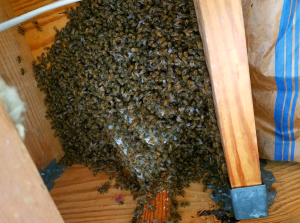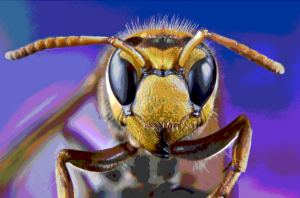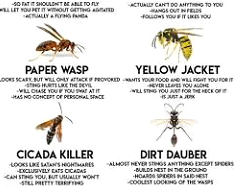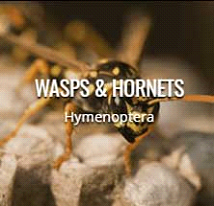A Wasp, Hornet & Bee Hive Removal Company in Coldwater & Hillsdale MI You Can Rely On

Need low-cost Wasp & Hornet Bee Hive Removal services in Coldwater & Hillsdale MI? (517) 999-5008 Faith Based, Veteran-Family-Owned Company.
At Wolverine Pest Control, we cherish cities like Coldwater and are dedicated to offering the best pest control services to keep your home pest-free and enjoyable. With nearly 25 years of industry experience, Wolverine Pest Control has built a reputation for reliable bee and wasp control in Coldwater residents can trust. We proudly stand behind our work with a 100% satisfaction guarantee. If you need dependable pest control services in Coldwater, call us today! Get an Estimate Today. Get Bee Hive Removal from trusted local pros in your zip codes, Quincy, MI: 49082, Tekonsha, MI: 49092, Bronson, MI 49028, Allen, MI: 49227, Union City, MI: 49094
Get Beehive Removal From Trusted Local Professionals.

As our numbers show in 2024, homeowners’ average cost for insect control in Hillsdale County is between $82.00 and $808.00. Bee removal in Hillsdale, MI, means taking bees away from a place where they shouldn’t be. Some experts do this job. Honeybees are very important insects and can be useful for things like helping plants grow and making honey and beeswax. So, when experts remove bees, they usually move them to a new place where they can live safely and keep helping with crops and honey.
Bee Removal Coldwater, MI | Yellow Jackets, Wasps
This kind of work is like both getting rid of pests and taking care of bees. Pest control experts are crucial to taming your problem. Different methods of pest removal include: heat treatments, freezing treatments, and traps. Pests such as roaches, spiders, mites, fleas, bees, ants, scorpions, birds, wildlife, rodents, bed bugs, or termites are common pests found in or around. One tool used in bee removal is called a bee vac, which helps move the bees safely.
We’ll Take Care of Any Pests You Encounter
If you are experiencing other pest issues in your home or business, contact us. We’ve been providing full-service pest solutions in the Eaton Rapids area for over 20 years.
Understanding Bees and Wasps in Michigan
Bees and wasps both belong to the Hymenoptera family but are distinct species with different behaviors. Bees are generally more docile and play a crucial role as pollinators. Wasps tend to be more aggressive and are carnivorous, feeding on other insects and spiders. While bees are usually beneficial to have around, wasps can be a nuisance. Common bee species in Michigan include honey bees, bumble bees, carpenter bees, and sweat bees. On the other hand, Michigan is home to various wasp species, such as paper wasps, hornets, and yellow jackets.
Bees and Wasps Prevention and Control
Despite the potential risks associated with bees and wasps, their presence is essential for the health of our environment. Many of our food sources would be severely threatened without them. Therefore, it is crucial to educate ourselves and others on how to coexist safely with these vital insect species.
For all your pest control needs, call the experts at veteran and family-owned Wolverine Pest Services. Our faith-based company has been helping homeowners with pest solutions since 2008. Call us at (517) 999-5008, and we will provide you with a free over-the-phone quote.
Sometimes, a local beekeeper can help by removing the bees without hurting them. The beekeeper might keep the bees, sell them, or help someone else take care of them in a special bee box. However, not all beekeepers can do this job. Most of the time, the bees being removed are Western honey bees. But there are also Africanized bees, which are a mix of different bee types, that can be moved safely too.
Relocation
Beekeepers and special companies sometimes move honeybee nests from places where they are not wanted to new homes called artificial hives. This process is known as a “cut out.”
Animal Destruction
Black bears and grizzly bears often break into beehives because they are looking for honey and the protein-rich larvae inside. To keep bears away, people can use fences that give a small electric shock. These fences can be powered by plugging them into an outlet or using solar energy for places without electricity.
In some parts of Africa, farmers use beehives to protect their crops from elephants. These beehives are hung on a wire that goes around the fields. The idea, created by Lucy King, is to scare the elephants away because they are afraid of bees.
Human Destruction
People have been destroying beehives for a long time to collect honey, beeswax, and other bee products. Nowadays, there are modern methods to collect honey without harming the bees, like using special honey frames and centrifuges. Sometimes, people need to destroy beehives to keep others safe or to stop the spread of bee diseases. For example, in Florida in 1999, Africanized honey bee hives were destroyed. In Alaska, there are rules for dealing with sick hives, including burning them, burying them, or using special gases to fumigate them. In New Zealand and the United Kingdom, if hives are infected with a disease called American foulbrood, beekeepers must burn the hives by law to stop the disease.
Beehives
A beehive is a special home where some honey bees live and take care of their babies. Even though people often use the word “beehive” to talk about any bee home, scientists and experts make a difference between a “nest” and a “hive.” A nest is where bees live in natural places like trees or in places humans didn’t make. A hive is a man-made structure made for bees to live in.
Different kinds of honey bees live in colonies, or big groups, together. The most important ones for making honey are the western honey bee (called Apis mellifera) and the eastern honey bee (called Apis cerana).
Inside a beehive, there’s something called a honeycomb, which is made up of lots of tiny, six-sided cells made out of a material called beeswax. These cells are like little rooms where bees store their food (honey and pollen) and take care of their young (eggs, larvae, and pupae).
Beehives are useful in many ways. They help produce honey, pollinate crops, provide bees with special health treatments, and help solve problems when bee colonies start to die off. In America, people often move hives to different places so bees can help pollinate plants there. There are many different designs for beehives, and some of them even have patents!
Different Types of Beehives

While there are many variations, three main types of beehives dominate the beekeeping world:
1. Langstroth Hive
- The most common type.
- Vertical design: Boxes stacked on top of each other.
- Frames: Removable frames with wax foundation for bees to build comb on.
- Advantages: Easy to manage, standardized equipment, efficient honey extraction.
- Disadvantages: Can be heavy to lift, and requires more equipment.
2. Top Bar Hive
- Horizontal design: Single long box with bars across the top.
- Natural comb: Bees build comb from the top bars.
- Advantages: Less invasive inspections, lighter to handle, potential for natural beekeeping.
- Disadvantages: More challenging to manage, honey extraction can be messy, and less standardized.
3. Warre Hive
- Vertical design: Similar to Langstroth but with smaller boxes.
- Natural comb: Bees build comb from top bars.
- Advantages: Closer to natural beekeeping, less lifting, and potential for higher honey yield.
- Disadvantages: Less standardized, more challenging to manage, honey extraction can be difficult.
Other Types of Beehives
- Layens Hive: Horizontal, similar to Langstroth but without frames.
- Skep Hive: Traditional, round woven hive.
- Observation Hive: Designed for viewing bees without disturbing them.
Choosing the Right Hive
Consider factors like experience level, desired honey yield, climate, and personal preference. Many beekeepers start with a Langstroth hive due to its ease of management and availability of equipment.
Bee Removal Service in Hillsdale, MI
We offer bee removal services in the following zip codes:
- Quincy, MI: 49082
- Tekonsha, MI: 49092
- Bronson, MI: 49028
- Allen, MI: 49227
- Union City, MI: 49094
Wasp, Hornet, Bee Removal in Coldwater, SE Michigan: FAQ

Understanding the Threat
What is the difference between wasps, hornets, and bees?
- Wasps: Typically have smooth bodies, are predatory, and can sting multiple times.
- Hornets: A type of wasp, but larger and more aggressive.
- Bees: Hairy bodies, important pollinators, and usually only sting once.
Are wasps, hornets, and bees beneficial? Yes, they play a vital role in the ecosystem, controlling pests and pollinating plants. However, their nests near human habitation can pose a risk.
Removal and Prevention
When should I call for wasp, hornet, or bee removal? If a nest is located near high-traffic areas, causing allergic reactions, or showing aggressive behavior, it’s time to call a professional.
Is it safe to remove a nest myself? No, it’s dangerous. These insects can sting multiple times and cause severe allergic reactions.
How can I prevent wasp, hornet, and bee nests?
- Seal cracks and openings in your home.
- Remove food and sugary drinks from outdoor areas.
- Keep garbage cans tightly covered.
- Consider professional pest control services for preventative measures.
What happens during a wasp, hornet, or bee removal? Professionals use protective gear and specialized equipment to safely remove the nest. This often involves treating the nest with a pesticide and removing it.
Safety and Allergies
What should I do if I get stung?
- Wash the area with soap and water.
- Apply a cold compress to reduce swelling.
- Over-the-counter antihistamines can help with itching.
- If you experience severe symptoms like difficulty breathing, seek medical attention immediately.
What if I’m allergic to wasp, hornet, or bee stings? If you know you have a severe allergy, carry an epinephrine auto-injector (EpiPen) at all times. Wear protective clothing when outdoors, especially during peak insect activity.
Remember: Always prioritize safety. If you encounter a wasp, hornet, or bee nest, it’s best to maintain a safe distance and contact a professional pest control service.
Contact us Today to schedule your pest control inspection to exterminate bed bugs, ticks, fleas, rodents, spiders, termites & more.
